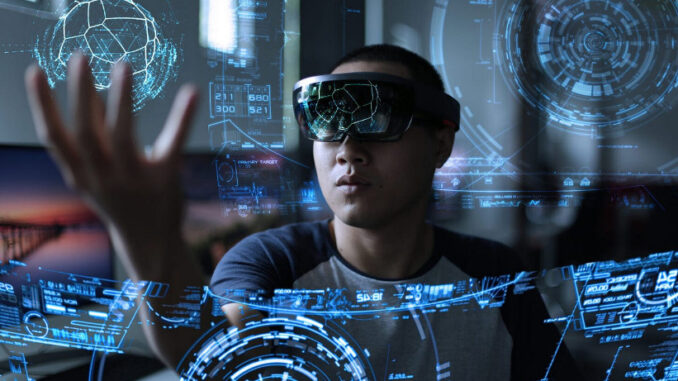
The integration of Artificial Intelligence (AI) and Augmented Reality (AR) creates powerful tools that enhance user experiences by blending the physical and digital worlds.
Here are key aspects and applications of combining AI and AR: Key Aspects of AI and AR Integration








Object Recognition:
AI algorithms, particularly in computer vision, can recognize and identify objects in real-time. This capability is crucial for AR applications to interact with and overlay information onto the physical world.
Image and Video Processing:
AI enhances the processing of images and videos captured by AR devices, enabling more accurate tracking and overlay of digital content.
Natural Language Processing (NLP):
NLP allows users to interact with AR applications using voice commands, making the experience more intuitive and hands-free.
Machine Learning:
Machine learning models can adapt and improve AR applications over time, learning from user interactions and data to provide more personalized and efficient experiences.
Data Analytics:
AI can analyze data collected through AR applications to provide insights, optimize performance, and enhance user engagement.
Applications of AI and AR
Retail:
AR-powered mirrors and apps allow customers to virtually try on clothes, accessories, and makeup. AI can recommend products based on the user’s preferences and past behaviors.
Healthcare:
Surgeons can use AR glasses to overlay critical information during operations. AI assists by analyzing medical images in real-time and providing decision support.
Education and Training:
AR can create immersive learning environments. AI personalizes the content based on the learner’s progress and needs, making education more effective.
Navigation:
AR applications can overlay navigation instructions on real-world views. AI enhances accuracy and provides real-time updates based on traffic and environmental conditions.
Maintenance and Repair:
Technicians can use AR glasses to see instructions and guidance overlaid on machinery. AI can provide diagnostic support and predict potential issues before they occur.
Gaming and Entertainment:
AR games become more immersive with AI-driven characters and environments that react intelligently to the player’s actions.
Marketing and Advertising:
Interactive AR ads can engage users more effectively. AI analyzes user interactions to optimize ad content and placement.
Real Estate:
Potential buyers can use AR to visualize how properties will look with different furniture and renovations. AI can suggest design options based on user preferences.
Key Technologies and Tools
Computer Vision:
Libraries and frameworks like OpenCV, TensorFlow, and PyTorch enable object detection, recognition, and tracking in AR applications.
Natural Language Processing:
Tools like Google Dialogflow and Microsoft LUIS facilitate voice and text interactions in AR.
AR Development Platforms:
ARKit (Apple) and ARCore (Google) provide robust frameworks for developing AR applications on iOS and Android devices.
Machine Learning Platforms:
Cloud services like AWS, Google Cloud AI, and Azure provide powerful tools for training and deploying machine learning models that can be integrated with AR.
Challenges and Considerations
Hardware Limitations:
AR applications require powerful hardware for real-time processing, which can be a limitation for mobile devices.
Privacy and Security:
Collecting and processing real-world data raises concerns about user privacy and data security.
User Experience:
Ensuring a seamless and intuitive user experience is crucial. Poor design can lead to user frustration and disengagement.
Data Integration:
Integrating data from various sources and ensuring its accuracy can be challenging but is essential for effective AI and AR applications.
Ethical Considerations:
Responsible use of AI and AR technologies is important to avoid misuse and ensure they benefit society positively.
The combination of AI and AR is a rapidly evolving field with the potential to transform industries and everyday life by providing more interactive, intelligent, and immersive experiences.

Leave a Reply